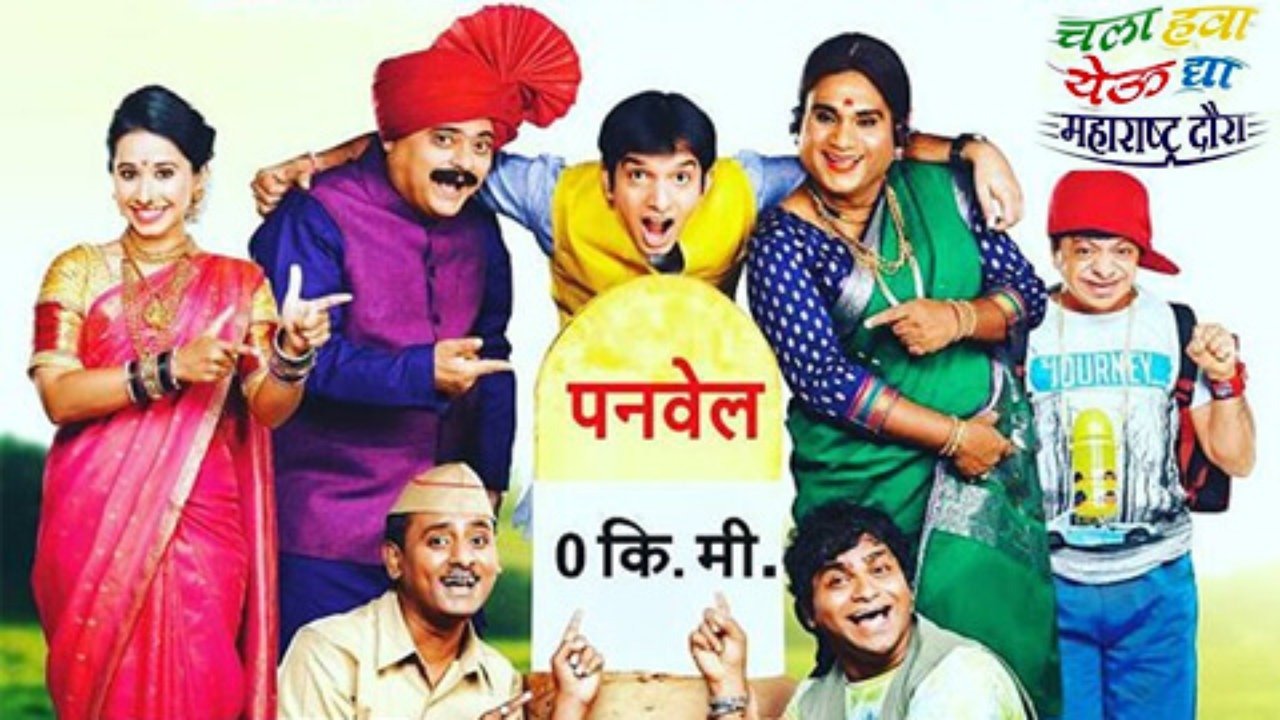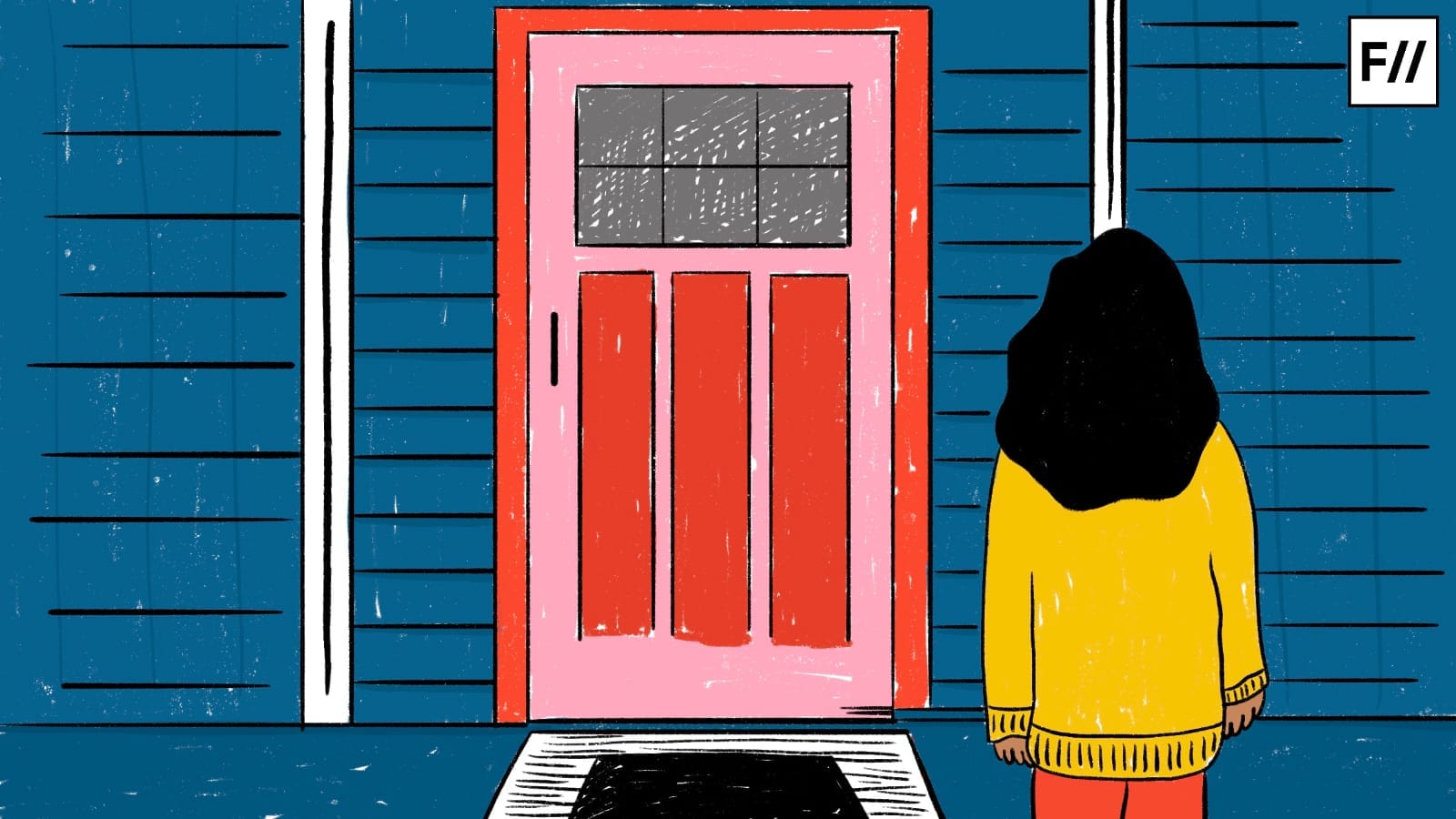I’ve never been a fan of most of the comedy content on Indian television. There has been a lot of outrage over the blatant misogyny which never seems to end in the comedy industry. ‘Comedy Nights With Kapil Sharma’ is one of these shows that has been heavily criticised for its problematic content. In almost a similar timeline, Zee Marathi started its Marathi comedy show ‘Chala Hawa Yeu Dya (CHYD)’, with recurring characters played by some of the winners and participants from previous comedy contests on the same channel. The current main artists are Nilesh Sable, Bhalchandra (Bhau) Kadam, Kushal Badrike, Sagar Karande, Shreya Bugade, Ankur Wadhve, Snehal Shidam, Yogesh Shirsat and Bharat Ganeshpure.
The very initial impression of the show might remind viewers of Kapil Sharma’s show because Nilesh Sable too, opens the episodes in a similar manner, invites artists for the promotion of their upcoming movie/series, and the show contains cross-dressing too.
The performing artists come from various socio-economic-lingual backgrounds in Maharashtra. The over representation and hegemony of the so-called upper-caste/class from Mumbai & Pune that’s usually seen in the mainstream Marathi film and television industry is almost negligible. The show makes a good attempt at showcasing the lingual and cultural diversity of Maharastra – Marathwada, Vidarbh, Konkan, Northern and Western Maharashtra, etc.,—one of the major reasons why many Maharashtrian people find it relatable.
These were the same factors based on which I wasn’t keen on watching CHYD until very recently, but when I started watching the latest season, I realised that there is no comparison between these two shows. The initial conclusion many ‘woke’ viewers would come to is that it’s a quality entertainment show and has been a healthy part of viewers’ lives. And there are some strong reasons for that:
- Inclusivity and Diversity in the Show: The performing artists come from various socio-economic-lingual backgrounds in Maharashtra. The over representation and hegemony of the so-called upper-caste/class from Mumbai & Pune that’s usually seen in the mainstream Marathi film and television industry is almost negligible. The show makes a good attempt at showcasing the lingual and cultural diversity of Maharastra – Marathwada, Vidarbh, Konkan, Northern and Western Maharashtra, etc.,—one of the major reasons why many Maharashtrian people find it relatable.
- Strong Female Artists: Though there are only two, Shreya Bugde and Snehal Shidam have equal screen time and vital parts in their skits.

- Cross-Dressing that is Not Cringe: Almost all the male artists play female characters half the time. Most of the appearance and performance while cross-dressing is comic yet beautiful, as good as the original female characters.
- Seemingly intelligent comedy, spoofs and puns that sometimes twist your brains and can be enjoyed with family.
- Promotion of social-welfare activities/organizations and propagating social message through some of the content.

All these things make Chala Hawa Yeu Dya look a very nice and healthy comedy show. But I still can’t laugh at most of their content, because though it shows characters having different regional background, body types and skin tones, the stereotypes are maintained as they have always been.
Colorism and Body Shaming: As you can see, most of the artists have medium to darker skin tones. There is at least one colourist joke on them per scene. The original actor from the movie they’re parodying are present in the audience, and thanks to the ‘Fair & Lovely‘ film industry they’re mostly fair; so the jokes are often based on the comparison between the original actor and the darker and ‘unfit’ parody actor. Such mockery is more if they’re playing a female character. My personal hell is to see them laughing at the dark skinned character advertising for a fairness cream of their own making. Out of the two original female artists, the light-skinned and thin actress is always given the female lead, and the darker one plays the side role (though all the roles are equally important).
Fat-shaming is mostly done to female characters (original as well as cross-dressed). They often use props of physical deformations like buck teeth and make jokes on that. Ankur Wadhve (and earlier Vineet Bhonde) has a lesser-than-average height, and plays all kinds of characters. But the writers take great pains in adding specific jokes to mock his height in the name of comedy.
Most of the artists have medium to darker skin tones. There is at least one colourist joke on them per scene. The original actor from the movie they’re parodying are present in the audience, and thanks to the ‘Fair & Lovely‘ film industry they’re mostly fair; so the jokes are often based on the comparison between the original actor and the darker and ‘unfit’ parody actor. Such mockery is more if they’re playing a female character.
Stereotyping: There are some specific repetitive characters that are very famous. Swargate Baai Punekar (by Sagar Karande) portrays a Brahmin woman from Pune who boycotts everything—the usual Pune stereotype which is highly exclusive. An Aagri man (the fishing and rice farming caste in Maharashtra) played by Kushal Badrike always wears thick golden chains he can’t even handle. Male characters are often shown to ‘forget their main character in the skit and put imaginary tobacco in their mouth by (rural) habit’ no matter how posh their character is; and then everyone else shouts at them, taking the high-ground of ‘manners’ & ‘etiquette’. Bhau Kadam is always shown to be a naive and non-cultured person who can’t speak English. And then everyone laughs at him saying, ‘How do you do, I love you, Pythagoras theorem,’ again and again, because those are supposedly the only English words his characters have heard.

Misogyny: The way male comedians from the show flirt with the ‘beautiful’ female celebrities who’re invited for their movie promotion is almost similar to what they did in Kapil Sharma’s show, though not that often. They have an entire character of Shanta Baai (based on a famous song with the same title) portrayed by Bhau Kadam, whose job is to flirt with the male invitees and joke about her imaginary experience of having worked as their maid. The comic press-conference they hold on stage has at least one journalist who flirts with the beautiful female English-speaking journalist and then she shuns them with an elitist retort like, ‘Seen your face in the mirror?‘
All in all, Chala Hawa Yeu Dya is a popular yet problematic show in Marathi. It took us so many years of shaming, gaslighting and trauma to have ONE Hindustan Unilever remove the word ‘fair’ from their beauty products. But to have a healthy, inclusive and non-offensive entertainment industry, there is still a long way to go.
Featured Image Source: IMDb
About the author(s)
Mudita Sonawane studies Physics, Hindustani classical music and government policies. She has represented University of Mumbai in the 9th South Asian Universities Festival. She is an avid observer of politics and takes an interest in Photography and painting as well.




